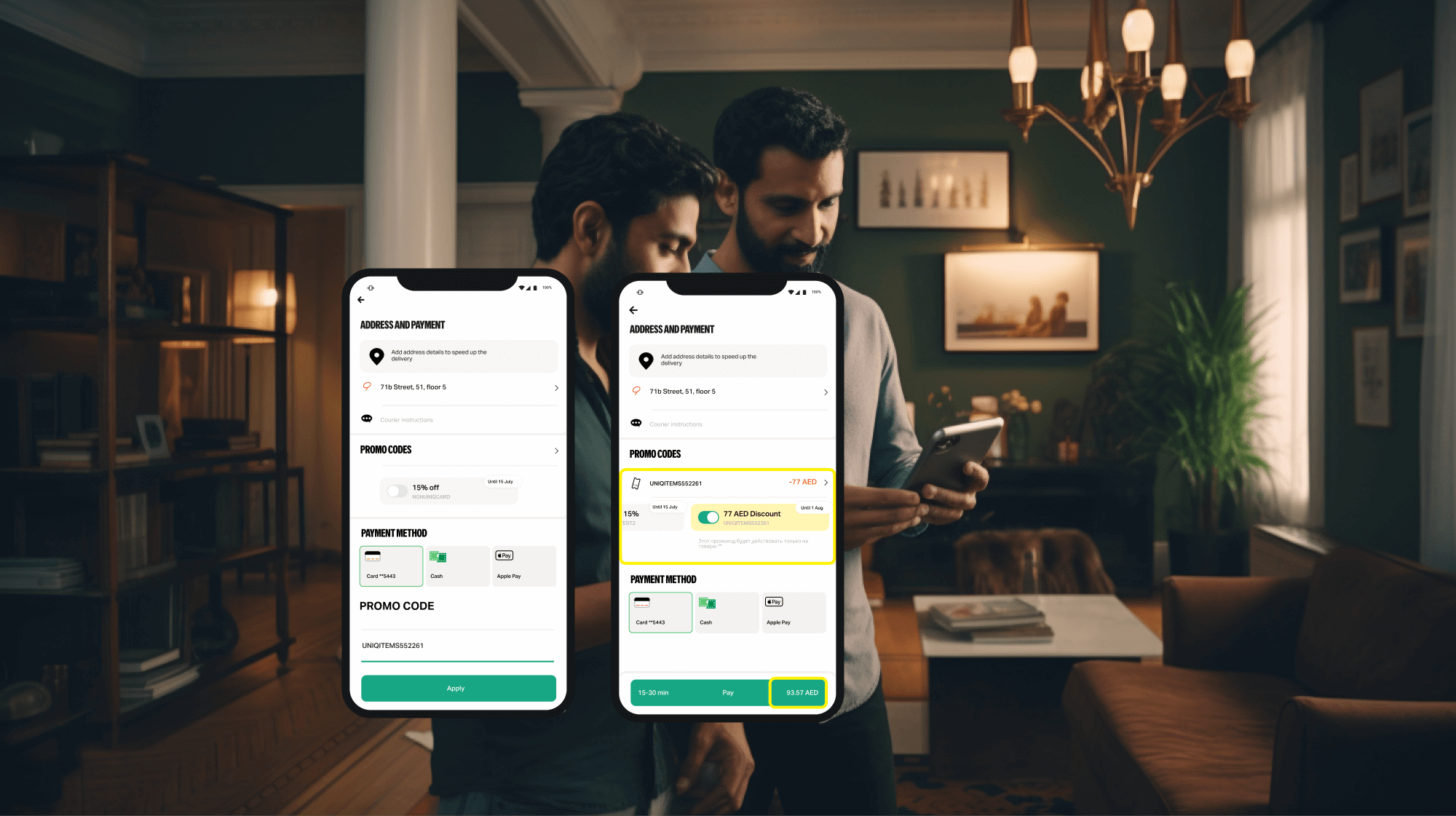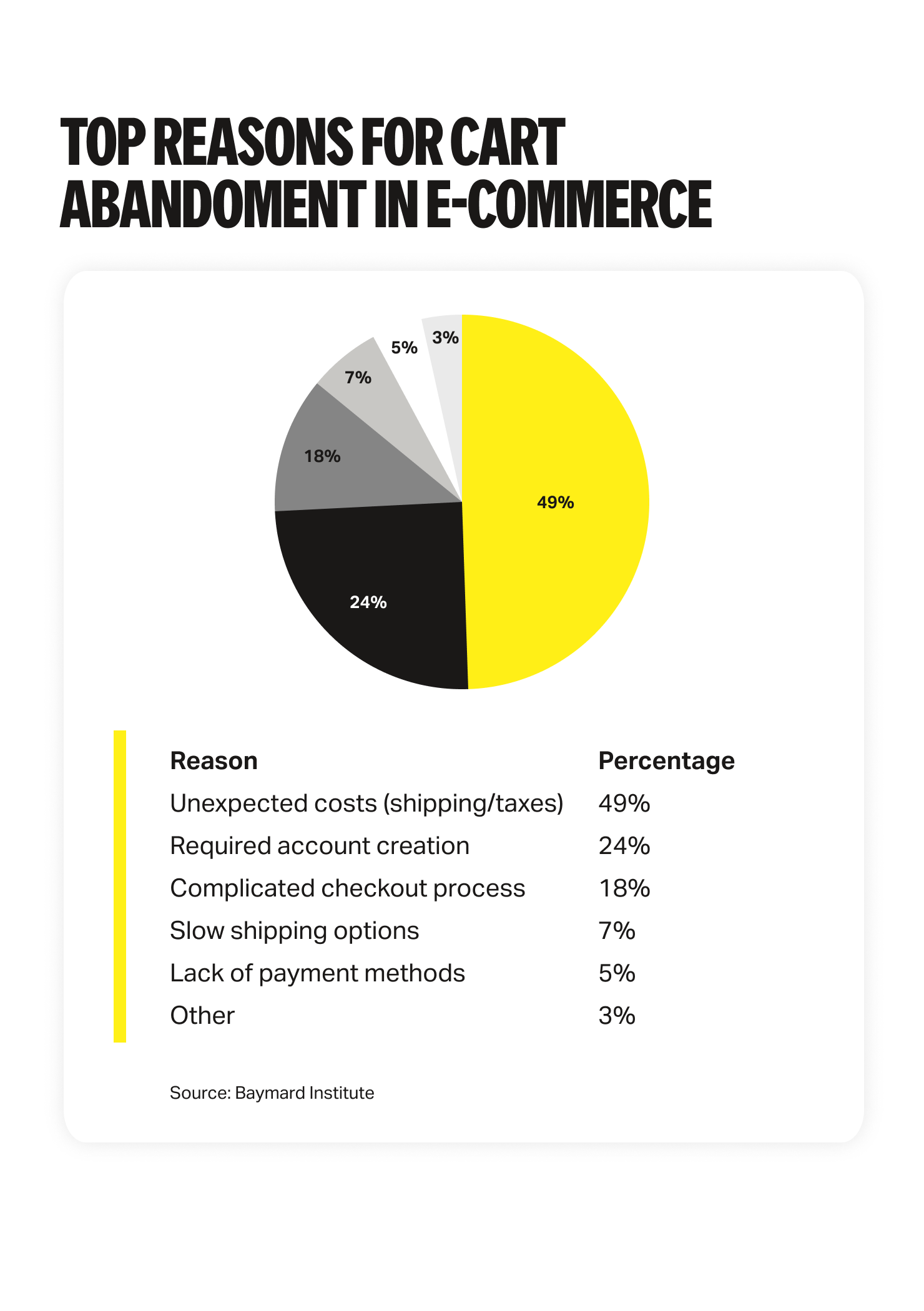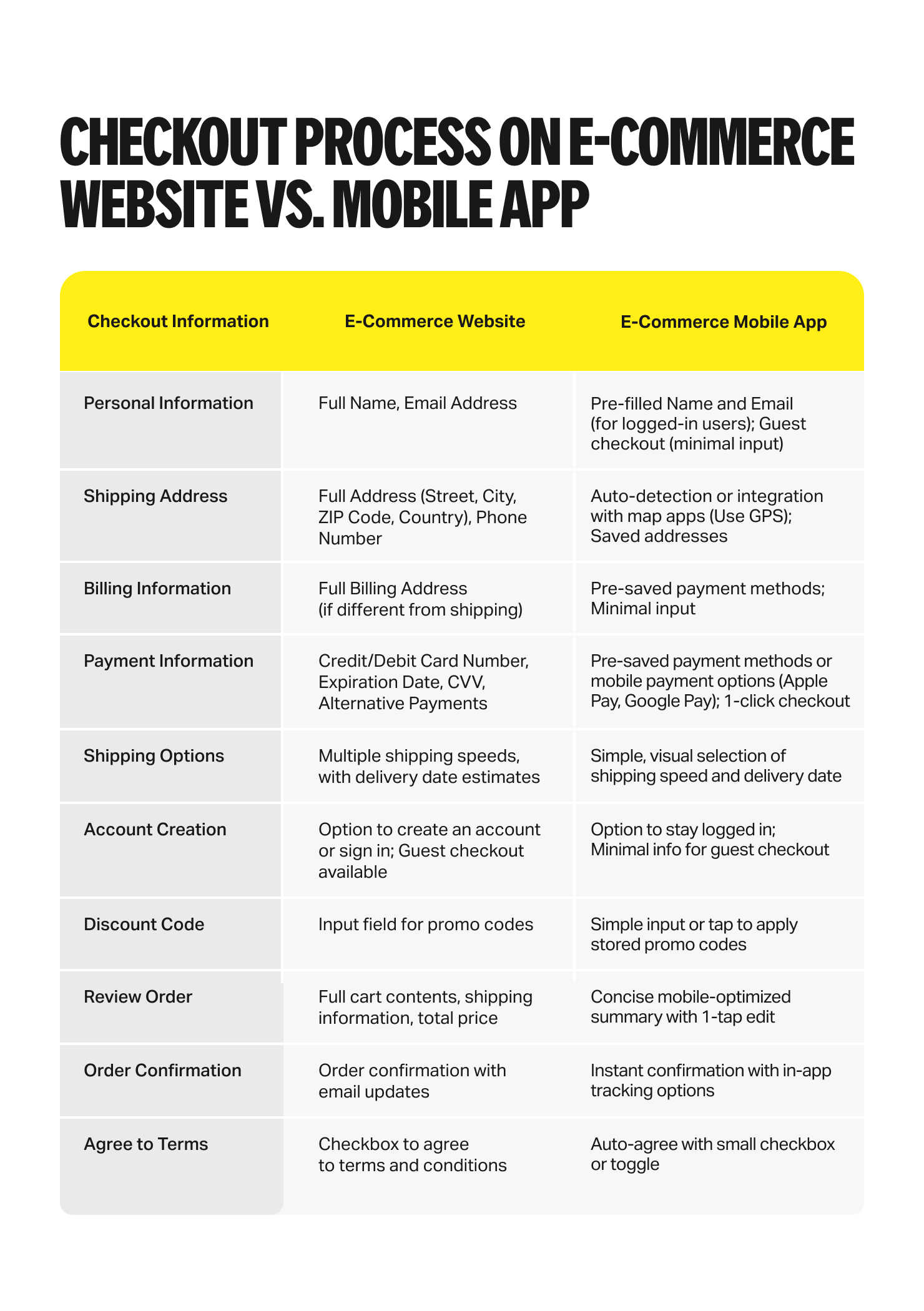Yango Tech and Surtifamiliar Partner for Next-Generation AI-Powered Grocery E-commerce in Colombia


The checkout process is the final stage of any e-commerce journey, and its optimization can make or break your sales. A frictionless checkout not only improves the customer's shopping experience but also minimizes cart abandonment, drives conversions, and builds trust in your e-commerce store. In this article, we will uncover the best practices that will help you streamline the checkout process and boost your e-commerce success.
Building trust is essential in e-commerce, and the checkout page is where it's most crucial. Shoppers need to feel confident that their personal and payment information is secure. To achieve this, you should prominently display trust signals, such as SSL certification, secure payment gateway logos, and customer reviews.
Trust signals show customers that your site is safe for transactions, reducing abandonment rates. Incorporating third-party badges and transparent security policies also boosts trust. The key is to make these signals highly visible, ideally near the checkout form or payment options, which can drive higher conversions.
As mobile e-commerce (m-commerce) continues to grow, ensuring a mobile-friendly checkout experience is non-negotiable. The mobile checkout page must be responsive, intuitive, and optimized for smaller screens.
A mobile-friendly process allows users to easily navigate, fill out information, and complete purchases from their phones without encountering frustrating barriers. Streamlining the mobile checkout process through touch-friendly interfaces, simplified forms, and large call-to-action buttons can significantly reduce cart abandonment and improve the overall shopping experience.

Providing a checkout progress bar is a simple yet effective way to enhance the user experience. A progress bar informs the customer of how far along they are in the checkout process and how many steps remain.
This transparency helps reduce uncertainty, making customers more likely to complete the purchase. Adding a visual element like a progress bar increases engagement and keeps users informed of their checkout status, which improves conversion rates. Progress indicators also reduce frustration, especially when there are multiple steps in the checkout process.
Offering diverse payment methods is crucial to accommodate different preferences among your customers. While traditional credit card payments are still popular, it's essential to include alternative payment options such as PayPal, Google Pay, Apple Pay, and even cryptocurrencies.
By allowing multiple payment methods, you make the purchase process more flexible, which can cater to a global audience and reduce abandonment. Some customers prefer using digital wallets for faster checkout, while others might need to rely on payment installments or local payment gateways. Offering more options shows customers that you are flexible and focused on their convenience.
One of the top reasons for cart abandonment is the lengthy and tedious task of filling out personal information. Simplify this step by enabling autofill for shipping and billing addresses. By doing so, customers can quickly input their information with minimal effort, reducing friction during the checkout process.
Implementing autofill for shipping addresses not only speeds up the checkout but also improves the accuracy of the information provided, lowering the chances of shipping errors and delivery delays. By reducing manual entry, you can create a seamless experience that minimizes abandoned carts and supports faster purchases.
Upselling and cross-selling are powerful strategies to boost revenue during the checkout process. By offering related products or suggesting upgrades, you can encourage customers to add more items to their cart. The key is to present these offers in a non-intrusive way, without overwhelming the buyer.
Upselling and cross-selling can also enhance the shopping experience by helping customers find complementary products they may not have considered. When implemented correctly, these tactics can increase the average order value while still delivering value to the customer.
Forcing customers to create an account before purchasing can cause friction and increase cart abandonment. By allowing a guest checkout option, you simplify the process for those who are either in a hurry or unwilling to commit to account creation.
Guest checkout ensures that customers can complete their purchases without unnecessary delays. If desired, you can still encourage them to create an account post-purchase by highlighting the benefits, such as order tracking or future discounts. This flexibility enhances the customer experience and improves conversion rates.
Enabling real-time chat support during the checkout process can provide immediate help for customers encountering issues. Whether they have questions about payment options, shipping details, or other concerns, having a chat feature allows you to address these queries instantly.
Integrating chat support reduces cart abandonment by resolving issues in real time, offering customers the help they need to complete their purchases. It also provides a more personalized experience, making customers feel valued and supported throughout their journey.
1-click checkout is one of the most effective ways to streamline the purchasing process, especially for returning customers. By storing customers' payment and shipping details securely, you can allow them to complete future purchases with a single click, eliminating the need to re-enter information.
This not only speeds up the checkout process but also enhances the overall shopping experience. 1-click checkout can significantly reduce cart abandonment and is particularly appealing to mobile users, who may find traditional checkout forms cumbersome to navigate on smaller screens.
Unexpected additional costs, such as shipping fees, taxes, or service charges, can cause customers to abandon their cart. It's important to be transparent about all costs upfront to avoid surprising your customers during checkout.
Consider offering free shipping or clearly showing the shipping options early in the process. By eliminating or minimizing extra costs, or at least making them clear from the beginning, you build trust with your customers and reduce the likelihood of abandonment at the final stage of their purchase journey.
The checkout process is where the majority of cart abandonment happens, so optimizing it is essential for the success of any e-commerce business. It represents the final point where customers decide whether to complete their purchase or leave. Therefore, creating a seamless and optimized checkout experience is critical for conversion.
The best checkout practices minimize friction, instill trust, and offer a smooth, user-friendly experience that guides the customer toward purchase completion. By improving checkout, you enhance the overall customer journey, which leads to increased sales, customer loyalty, and long-term business growth.
Though it might seem these processes should be unified, the cases show this is not the case. The checkout process firstly depends on the existence of the profile - the reason being that the repeated customer will be able to pass over the majority of the data with auto-fill, which is expected in mobile applications that commonly require profile creation to use it.

Optimizing the checkout process in e-commerce is one of the best ways to enhance customer experience, reduce abandonment, and increase conversions. By implementing trust signals, offering multiple payment options, ensuring mobile-friendliness, and removing friction points, you can significantly improve your checkout page's performance. Consider these best practices to ensure a seamless checkout experience that leads to higher customer satisfaction and stronger sales results.